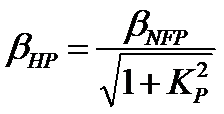I did find this in Wayne Johnson's book, Helicopter Theory:

Thus pitch-flap coupling reduces the flapping magnitude relative to the rotor shaft. Note that negative coupling is as effective as positive coupling, because the effect of Kp is to remove flap motion from resonant excitation. The sign of the feedback influences the phase of the response, and large negative pitch flap coupling does have an adverse effect on flapping stability. It is common to use 45 degrees of delta three on tail rotors (Kp=1) to reduce the transient and steady state flapping relative to the shaft.
Interesting that it says large negative delta3 does have adverse effects on flapping stability. That would explain why Bell uses a smaller angle on their negative delta3 tailrotors. But I still wonder why they would choose the negative, is there some advantage? Frank Robinson spent two years R&D at Bell in the late 60s where it says he earned a reputation as a tail rotor expert. Yet after leaving Bell he went to Hughes where he helped design a tail rotor with
positive delta3 and of course when he built his own helicopters he also chose
positive delta3. If there is an advantage to the negative delta3, Frank didn't seem to think much of it. If there isn't some advantage, then why toy the instability factor?